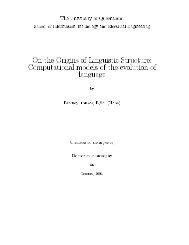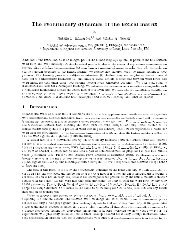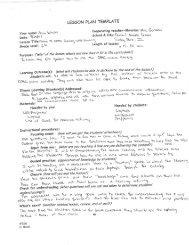Planning and Managing an Exhibition Programme
Planning and Managing an Exhibition Programme
Planning and Managing an Exhibition Programme
Create successful ePaper yourself
Turn your PDF publications into a flip-book with our unique Google optimized e-Paper software.
v'<br />
f<br />
t<br />
:<br />
others being<br />
hat museum<br />
ribitions.<br />
o<br />
c<br />
display collection: objects collected <strong><strong>an</strong>d</strong> preserved indefinitely, primarily for<br />
purposes of display - although of course they also reward study<br />
study collection: objects collected <strong><strong>an</strong>d</strong> preserved indefinitely, primarily for<br />
purposes of identification, study, research, <strong>an</strong>alysis or comparison with others;<br />
some of these may also be suitable for display, <strong><strong>an</strong>d</strong> may in fact be included in<br />
perm<strong>an</strong>ent collection displays, but the primary reason for collecting them is their<br />
value for study<br />
. reserue collection: objects to which the museum may not have made a commitment<br />
rf the public<br />
attest to the<br />
'ily fulfilled.<br />
even widely<br />
rtively small<br />
.ts often cite<br />
ion's merits,<br />
een as their<br />
r cent of its<br />
rin at its old<br />
dern in the<br />
the funds to<br />
:o <strong>an</strong>nounce<br />
nternational<br />
to display a<br />
nasterworks<br />
i <strong><strong>an</strong>d</strong> 15 per<br />
.s sometimes<br />
rssing social<br />
e associated<br />
, since m<strong>an</strong>y<br />
:ion display<br />
: are usually<br />
for indefinite preservation, either by reason of their condition, duplication of other<br />
items in the collection, intended use for h<strong><strong>an</strong>d</strong>s-on education purposes, their present<br />
isolation from other objects in the collection (which may or may not be remedied<br />
in time), or other factors. Items in the reserve collection may be tr<strong>an</strong>sferred to either<br />
of the other two categories when their condition is restored to be appropriate for<br />
display or studS or when other items are collected to make them a me<strong>an</strong>ingful<br />
group; others, such as those used in the h<strong><strong>an</strong>d</strong>s-on education programme' may<br />
eventually be de-accessioned.<br />
Once the display collection has been identified, the next step in pl<strong>an</strong>ning a perm<strong>an</strong>ent<br />
collection display programme is to project its growth. M<strong>an</strong>y curators initially despair<br />
of such projections, pointing to the unpredictable nature of <strong>an</strong> acquisition programme<br />
that may be heavily or even entirely dependent on donations. However, a study of the<br />
past fluctuations <strong><strong>an</strong>d</strong> averages is always instructive, <strong><strong>an</strong>d</strong> usually c<strong>an</strong> justify a reasonable<br />
projection, especially if the museum professionals making it are keenly aware of the<br />
sources of donations, <strong><strong>an</strong>d</strong> the probability or imminence of such signific<strong>an</strong>t events as a<br />
new building or renovated galleries that are likely to attract more donations when they<br />
are <strong>an</strong>nounced.<br />
Contrary to the <strong>an</strong>xieties of some curators, projecting a growth rate does not limit<br />
a museum's flexibiliry, but enh<strong>an</strong>ces it. Knowing the <strong>an</strong>ticipated growth rate facilitates<br />
a regular check against projections, so that adjustments c<strong>an</strong> be made, <strong><strong>an</strong>d</strong> adv<strong>an</strong>tage<br />
may be taken of opportunities in a responsible way that acknowledges the space or<br />
scheduling challenges that new acquisitions present. Case study 8.2 presents <strong>an</strong><br />
example of collection growth resulting from a temporary exhibition, in turn affecting<br />
the'Walters Art Gallery's perm<strong>an</strong>ent collection display pl<strong>an</strong>s'<br />
Only when the display collection has been identified <strong><strong>an</strong>d</strong> its growth projected as<br />
reasonably as possible, should the present <strong><strong>an</strong>d</strong> preferred display/storage ratio be<br />
considered. The ideal is not necessarily the maximum:<br />
PLANNING AND MANAGING AN EXHIBITION PROGMMME 263







